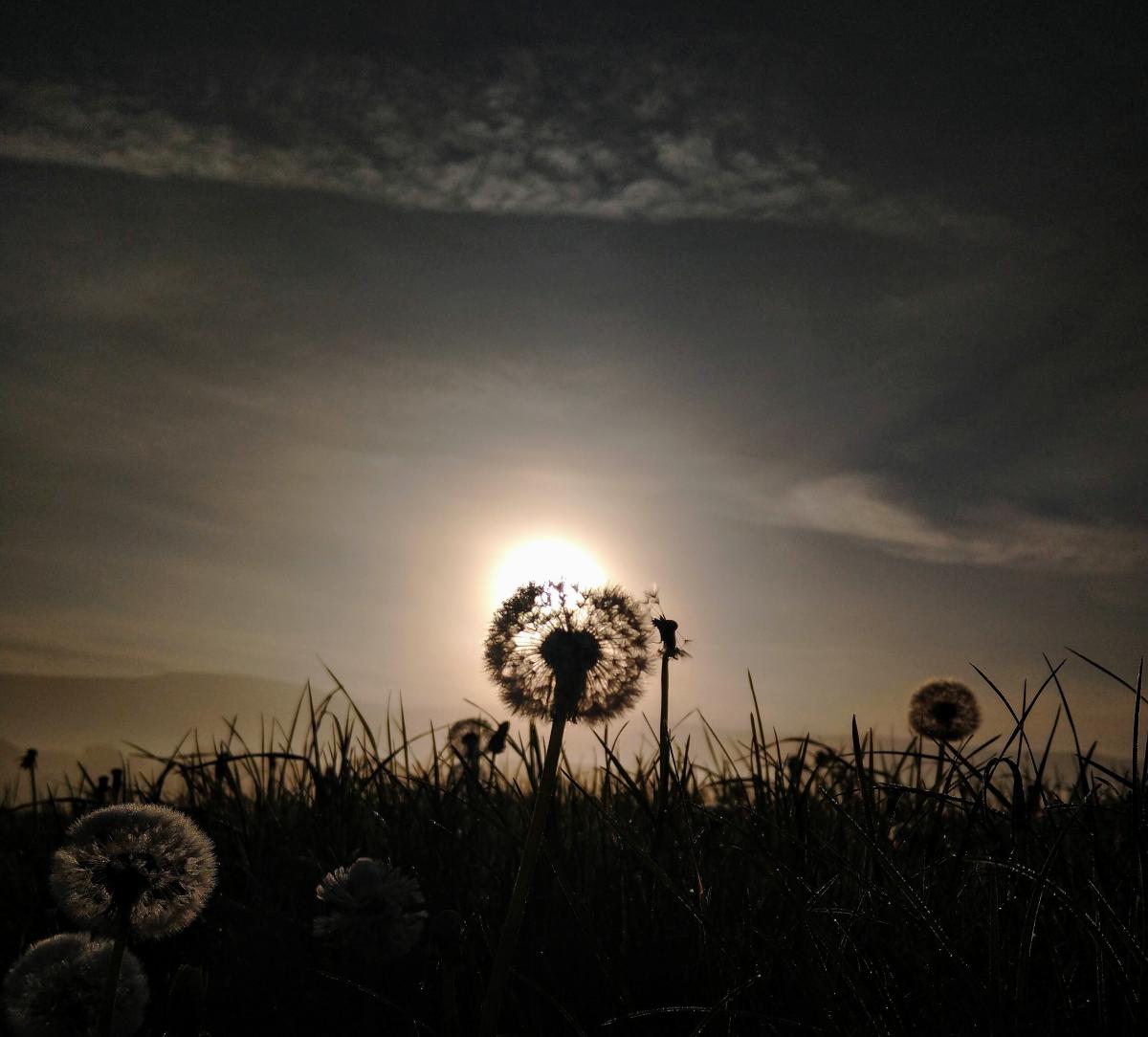
One week Sandilands is yellow, the next white and fluffy as the dandelions go to seed. For the first time, I see a charm of goldfinch feeding on dandelion seeds on a village verge. In my own garden, pairs of them arrive taking beakfuls of sheep wool, that I leave around each year, for nesting material.
I’m straddling two worlds. One as a Regenerative Gardener living in a town, tending gardens, and one as a Guardian of this larger piece of land. Here, I gratefully sit under an old crab apple, blossom floating around me as the warm wind blows gently. Hoverflies dodge the drifting petals and I think about tech pioneers; Elon Musk, Zuckerberg, AI developers and I think, ‘I wonder if they know this?’ The beauty, stillness, complexity, gentleness, resilience and web of the undisturbed natural world?
Masanobu Fukuoka said “The real path to natural farming requires that a person know what unaltered nature is, so that he or she can instinctively understand what needs to be done – and what must not be done – to work in harmony with its processes.”
Fukuoka wrote ‘The One Straw Revolution’ and gave birth to the idea of ‘natural farming’ or ‘do nothing farming’. But us humans are not so good at non-intervention or ‘not doing anything.’
It’s No Mow May, before Let it Bloom June. The charity Plantlife launched No Mow May in 2019 to try to hit back at 97% of our hay meadows being lost since the 1930’s. The idea is for May, don’t cut your lawn, as it may have a seed bank and many wildflowers in it providing nectar for pollinators, and longer grass can provide habitat for creatures. But if you’ve laid turf, all you’ll get is long spikey grass.
Like the lawns with a seed bank, as Sandilands is left, more appears. The light pink cuckoo flower; tiny, white common mouse-ear; tangy tasting, red-tinged common sorrel; graceful meadow buttercup, and close to the earth clover. When they have all flowered, we’ll gently add, as seeds, what is missing to a traditional wildflower mix, and hope to re-establish a tiny part of that lost 97%.
2 lapwings, a breeding pair, circle and call 2 fields away and I remember other birds, now rare, that I grew up with. We’d have curlews every year, making a nest in the long grass of our field, the farmer making sure they’d fledged before cutting the meadow for hay. May curlew return here one day.
Most of the fields around Sandilands are like the turf grass. Lush, dark green grass, a waving ocean of monochrome, probably for silage. I was talking on Radio Cumbria about No Mow May and I was asked ‘Isn’t it messy?’ I replied something like ‘We need to change our viewpoints and see motion, texture and different hues of grasses and flowers at different heights as life giving and beautiful because we are providing habitat for many creatures.’ This is the case if you’re starting with a good variety of seed in the earth. I look at Sandilands and the deep green ocean next door. It’s alluring as it seems to move on mass, hypnotically. Sandilands is a patchwork of colours, tone, textures and height inviting closer inspection. It deserves getting on your knees for and creeping through it, nose to the ground, from the ant’s view, to get a glimpse at the variety.
I stayed late one night, lying in the patchwork of plants, watching the sun go down. The flare of light catching the clouds, mottling across the sky. Catching the crab apple blossom and dowsing the one remaining bird still singing. Then it’s quiet, so quiet. No roar of traffic, no yowl of cats, no calls of humans, no beeps, pings or notifications. Restful and resetting my bones, sinews and brain, being filled with the slow pulse of a day ending. And as I go home, I think - we all need this. A deep reconnection, re-immersion into a world we’re quickly forgetting about, and I recall another thing Fukuoka said “The healing of the land and the purification of the human spirit is the same process.”

